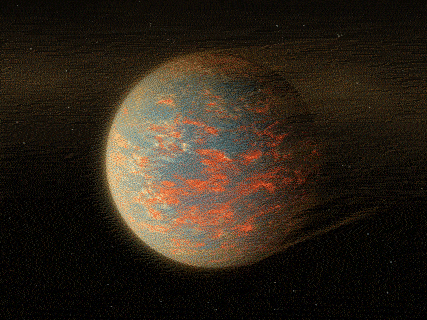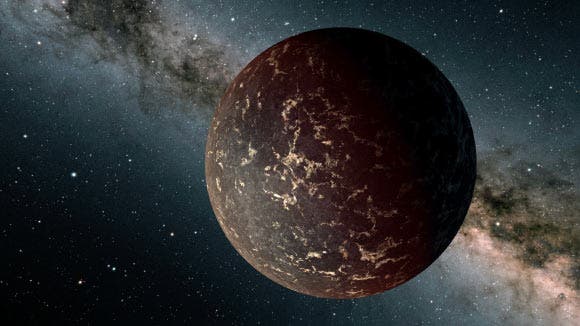Back in the day, if you wanted to do geology, you had to go and find nice outcrops and study them in detail. But now, the James Webb telescope will be used to study the geological diversity of planets across the solar system from light-years away.

The James Webb Space Telescope, one of the most exciting science projects in recent years, is about to switch on. Well, technically, it’s already switched on, but it’s close to being fully calibrated — and ready to kick into gear. Its first objectives are two rocky planets with the rather unglamorous names 55 Cancri e and LHS 3844.
But while their names may not be interesting, the planets themselves are.
Burning geology
55 Cancri e is a rocky exoplanet that orbits a Sun-like star. Its diameter is about two times bigger than the Earth’s, and its mass is 8.63 times that of the Earth — a so-called “super Earth” with a molten surface.
However, 55 Cancri e is much closer to its star than the Earth is to the Sun. It takes just 18 hours for the planet to complete a “year” (a full rotation around its star) – the distance between the planet and its star is just a fifth of the distance between Mercury and our Sun.
Researchers thought that because it’s so close to its star, 55 Cancri e must be tidally locked, like the moon is to the Earth. In other words, the star would only “see” one part of the planet, where it would be perpetual day, whereas the other side would be colder and shrouded in darkness. But this doesn’t seem to be the case.
Observations from NASA’s Spitzer Space Telescope suggest that the total amount of heat detected across the day varies, and the part which is hottest is not on the side facing the star.

There’s still a possibility that the planet is tidally locked, in which case the observations could be explained if the planet has an atmosphere, but researchers aren’t sure what the atmosphere would be made of.
“55 Cancri e could have a thick atmosphere dominated by oxygen or nitrogen,” explained Renyu Hu of NASA’s Jet Propulsion Laboratory in Southern California, who leads a team that will use Webb’s Near-Infrared Camera (NIRCam) and Mid-Infrared Instrument (MIRI) to capture the thermal emission spectrum of the day side of the planet. “If it has an atmosphere, [Webb] has the sensitivity and wavelength range to detect it and determine what it is made of,” Hu added.
Another explanation could be that the planet is rotating three times for every two orbits (what’s known as a 3:2 resonance), much like Mercury.
“That could explain why the hottest part of the planet is shifted,” explained Alexis Brandeker, a researcher from Stockholm University who leads another team studying the planet. “Just like on Earth, it would take time for the surface to heat up. The hottest time of the day would be in the afternoon, not right at noon.”
Researchers want to explore these options in greater detail and figure out as much as possible about this exotic, hot super-Earth.
A hot, but different planet
Meanwhile, LHS 3844 b also orbits very close to its star, like 55 Cancri e — but its star is much smaller. As a result, the temperature isn’t high enough to melt its surface.

The planet has a low albedo, which suggests it has a darker surface, much like that of the Moon or Mercury. But what’s most interesting about it is its lack of an atmosphere. This lack of an obstructing atmosphere means researchers will be able to probe it more directly.
It’s also unclear why exactly the planet doesn’t have an atmosphere. This could be due to the way the planet was formed — beyond the so-called “snow line,” in which volatiles like water, ammonia, or carbon dioxide can exist and can contribute to an atmosphere; but it could also be owed to a cataclysmic impact.
Being able to survey planets like these in unprecedented detail is exciting, and the James Webb Space Telescope can enhance our understanding of the universe, probably in more ways than we envision. After decades of planning and work, it’s finally happening. Next up: 55 Cancri e and LHS 3844.









